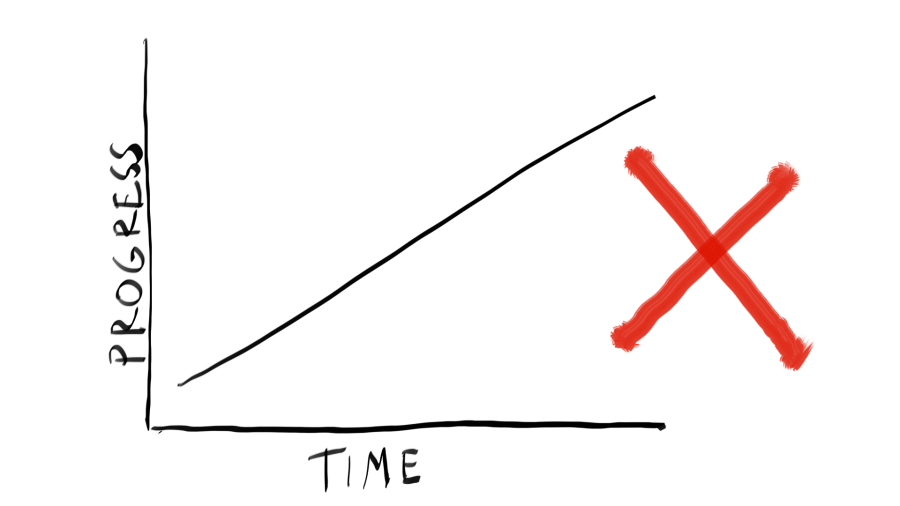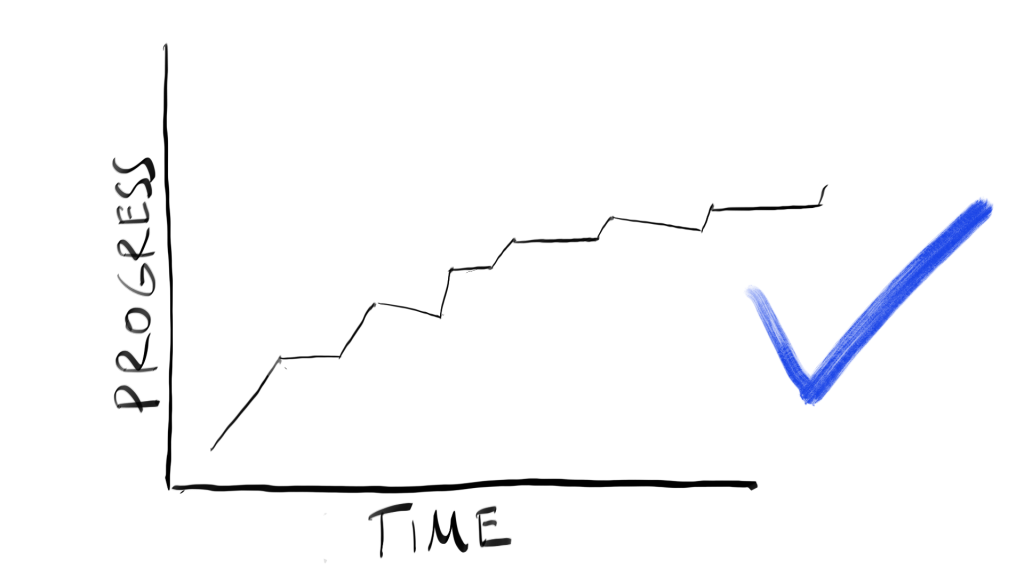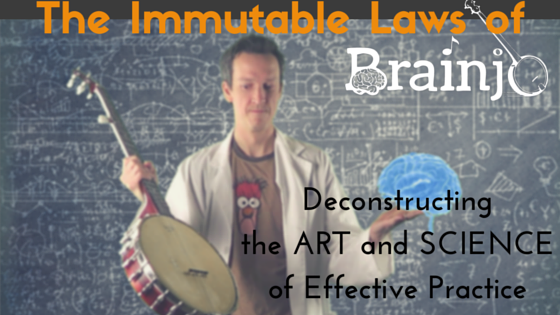Episode 17: What Progress Really Looks Like
 I’ll bet this has happened to you:
I’ll bet this has happened to you:
On an ordinary day, just like any other, you pick up your banjo and starting plucking around. After a few minutes, though, you note that something doesn’t feel quite right. You feel clumsy, you can’t pick the strings as as cleanly as you’d like, and tunes that typically come easily feel like a struggle. It’s as if you’ve stepped into a time machine and gone back several months, or more.
Raising the Dead
We’ve discussed in prior episodes that learning the mechanics of banjo playing requires that we build new pathways, networks of connections between brain cells, that control the various aspects of playing. As our banjo playing skills improve, so does the number and complexity of those networks.
Furthermore, these are specific types of neural networks that we want build, ones that do not require input from the conscious mind for their execution. In the last episode, I introduced the term (borrowed from neuroscientist David Eagleman) “Zombie Subroutine” to describe them.
To progress down the timeline of mastery, we want to build a complete set of effective and efficient Zombie Subroutine for banjo playing, so that our picking becomes automatic.
Research on neuroplasticity, or the science of brain change, has shown us that, inside the brain, your first attempts at performing a new skill look very different than your attempts after the skill has been fully learned.
At both the molecular and structural level, the parts of your brain controlling your first awkward attempts to form the D chord shape, for example, will look quite different than your attempts after that skill has become automatic. Which means that between those two points in time, a lot of changes must take place inside the brain.
Learning Fast and Learning Slow
One helpful way to view skill acquisition is to divide the process into two types of learning, fast and slow.
Fast learning is, naturally, learning that occurs relatively fast, on the order of minutes to hours. Learning the digits of a new phone number, or remembering how a new melody goes, for example. These sorts of things are accomplished by physiologic changes in the brain that occur quickly, like adjusting the strength of connections between synapses (the region where brain cells communicate with each other).
Slow learning tasks, on the other hand, take longer. They take longer precisely because they can ONLY be accomplished by changes in brain physiology that take longer. Changes like the formation of new synapses, the sprouting of new dendrites, or even the whole-scale transfer of parts of the network from one region of the brain to another.
These are all processes that require days, if not weeks, to occur. Each of these processes has their own time scale, but they all take more time, on the order of days to weeks to complete.
Just how long depends on multiple factors, including the complexity of the skill being learned, as well how well prepared the brain is to learn said skill. And whether the brain is well prepared depends largely on on how thoughtful we’ve been with our learning sequence up to that point (one reason why the sequence of learning is so vital to success).
Most of the building of banjo playing Zombie Subroutines involves slow learning processes, which is why the purpose of practice, as mentioned in Brainjo Law #2, is not to get better right there and then, but rather to “provide your brain the data it needs to build a neural network.”
And based on what we know of the biology of network building, specifically the varied processes that support slow learning, we shouldn’t expect our progress to be in a straight line day to day. Depending on the skill involved, our progress might be day to day, but it very well might take longer.
And during the process of neural reorganization that facilitates slow learning, we’re unlikely to see significant improvements. We may even see dips in our performance, periods where it feels like we’ve actually regressed.
But, just as you’ve likely experienced these moments of apparent setbacks, I’ll bet you’ve also experienced the opposite: times where you’ve struggled with something for a while, perhaps even concluding that it’s just too difficult, when suddenly – BAM! – you can do it. With ease, in fact. It’s in these moments that your Zombie Subroutine, now complete, has just been brought to life.
The three P’s of success: Passion, Persistence, and Patience.
– Doug Bronson
Setting Expectations
In the beginning, your initial gains feel huge because, well, they are huge. The chasm between zero banjo skill and being able to play through your first tune is enormous. And, just as the year between your 40th and 41st birthday seems a lot shorter than the one between your 4th and 5th, it may feel as if your progress slows a great deal over time.
Furthermore, the longer you play, the better you get, the more sophisticated your mechanics, the more complex the Zombie Subroutines that support them become. And so they take longer to build. Taking longer to build means that the plateaus, the time between the creation of one network and the next, will get longer. This may give the impression that you’re not progressing, even though under the hood er…skull…things are in constant flux.
It could be all too easy to give up in these moments where we feel like we have ten thumbs. But, understanding that these moments may be progress in disguise can provide us the all-important patience we need to give things just a little more time.
Brainjo Law #18: Expect your progress to look like a staircase, not a straight line

Back to the “Laws of Brainjo” Table of Contents

